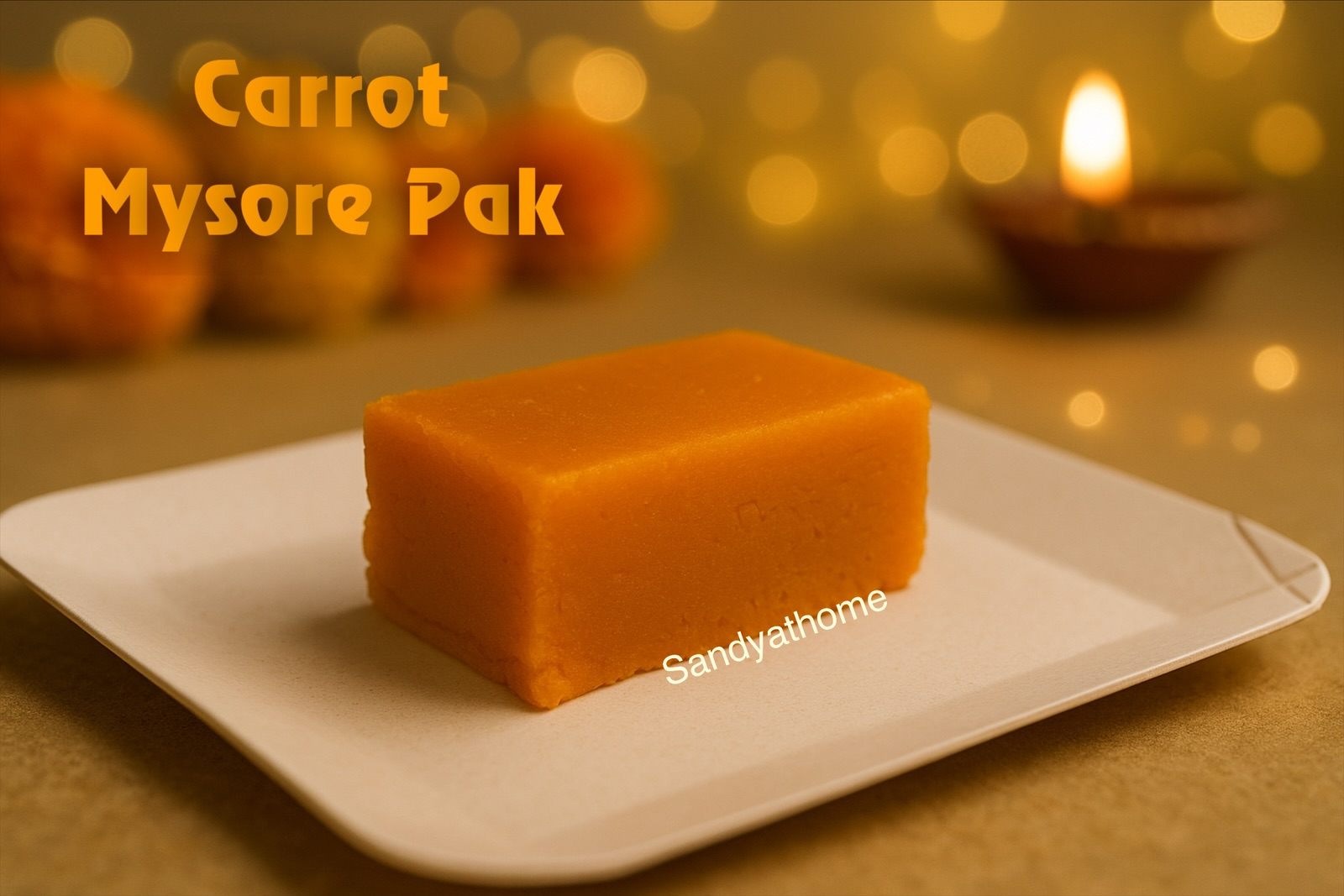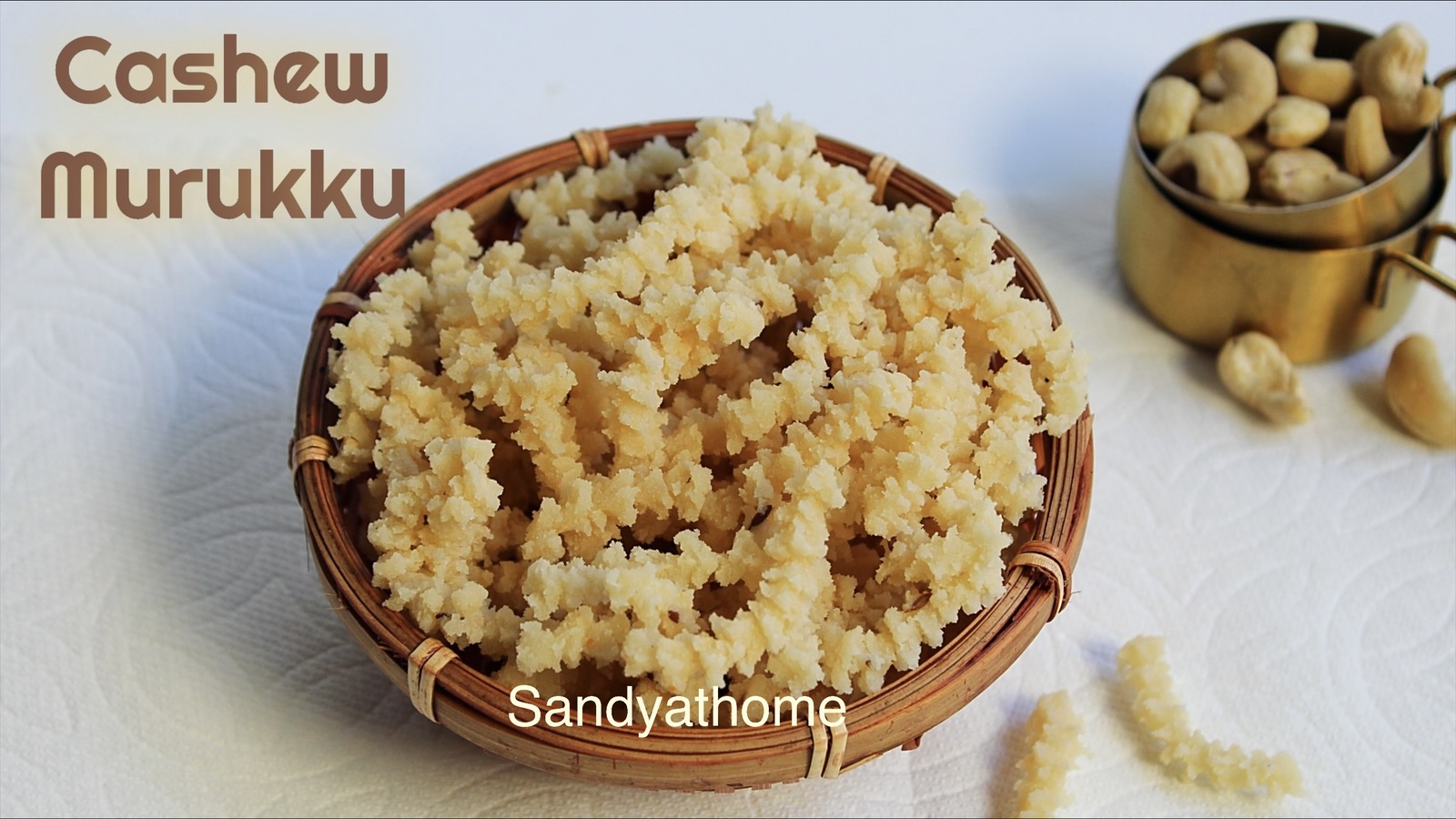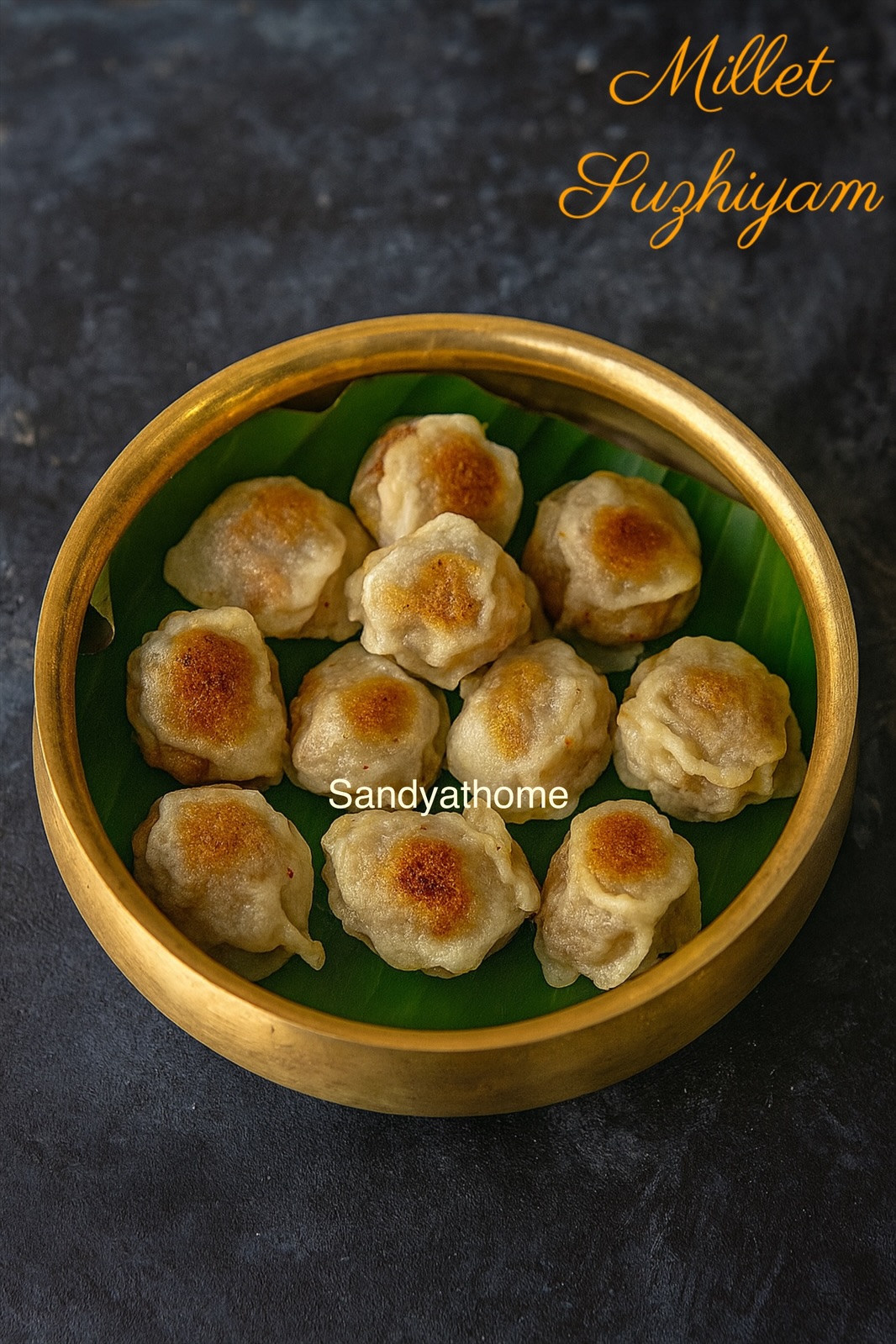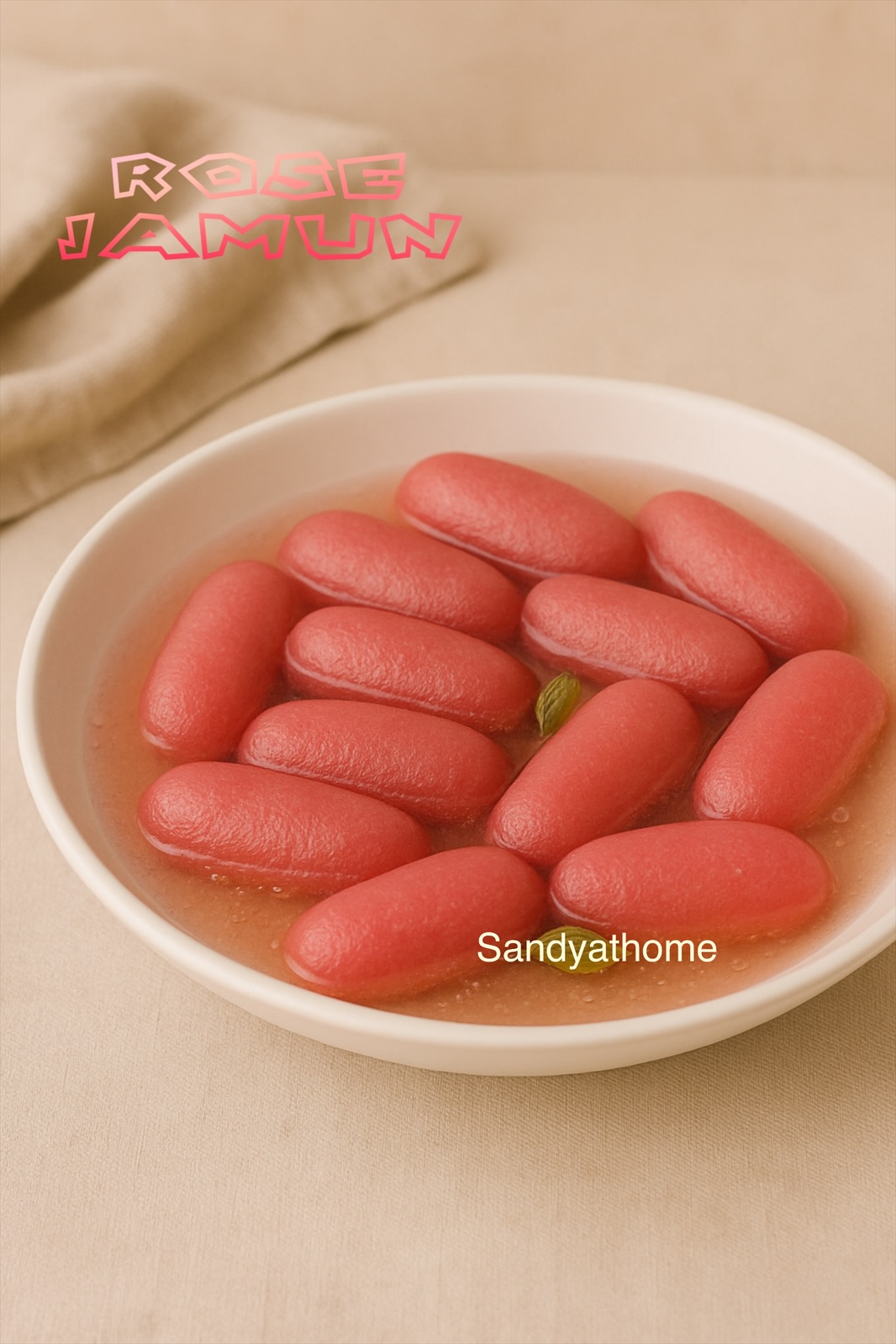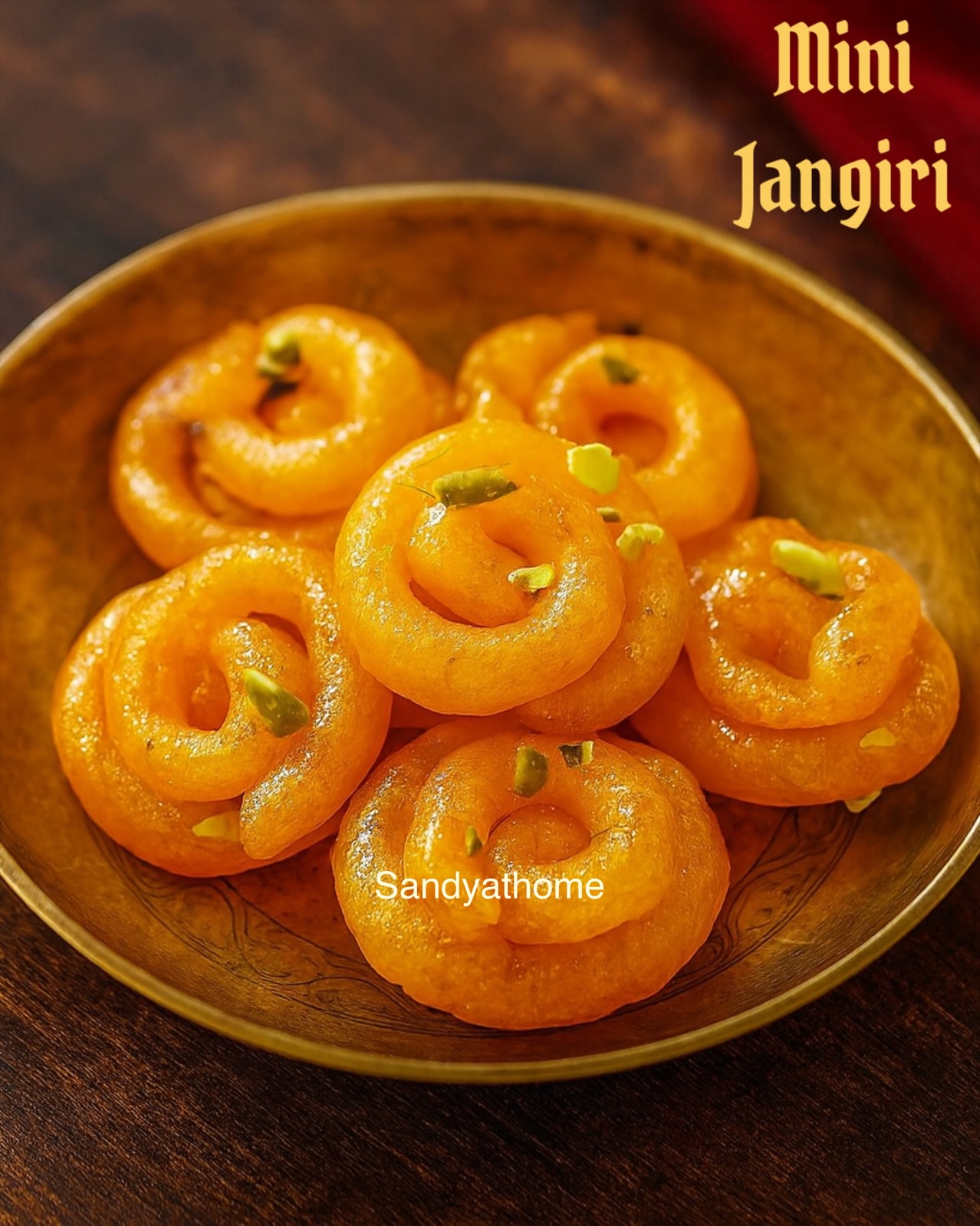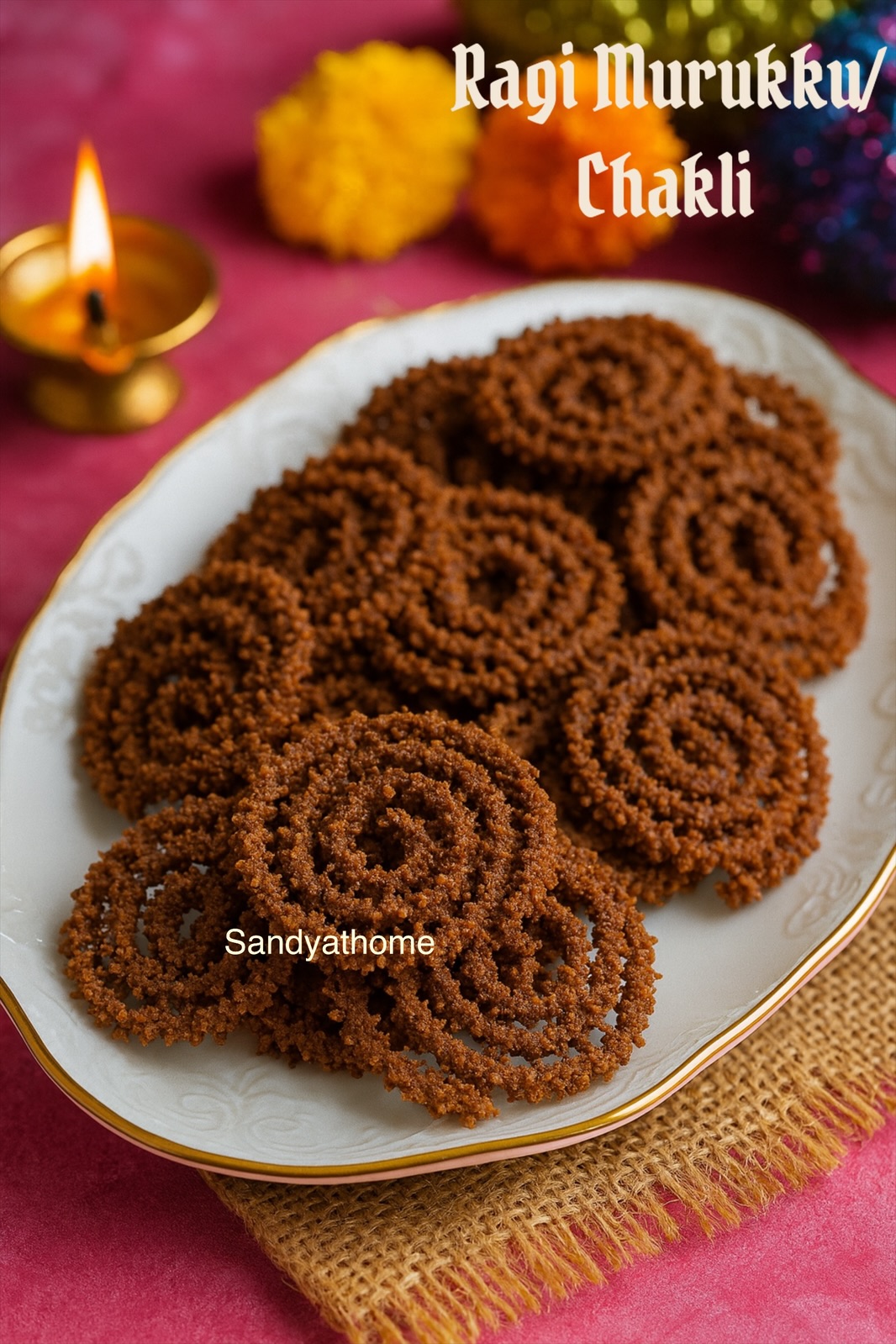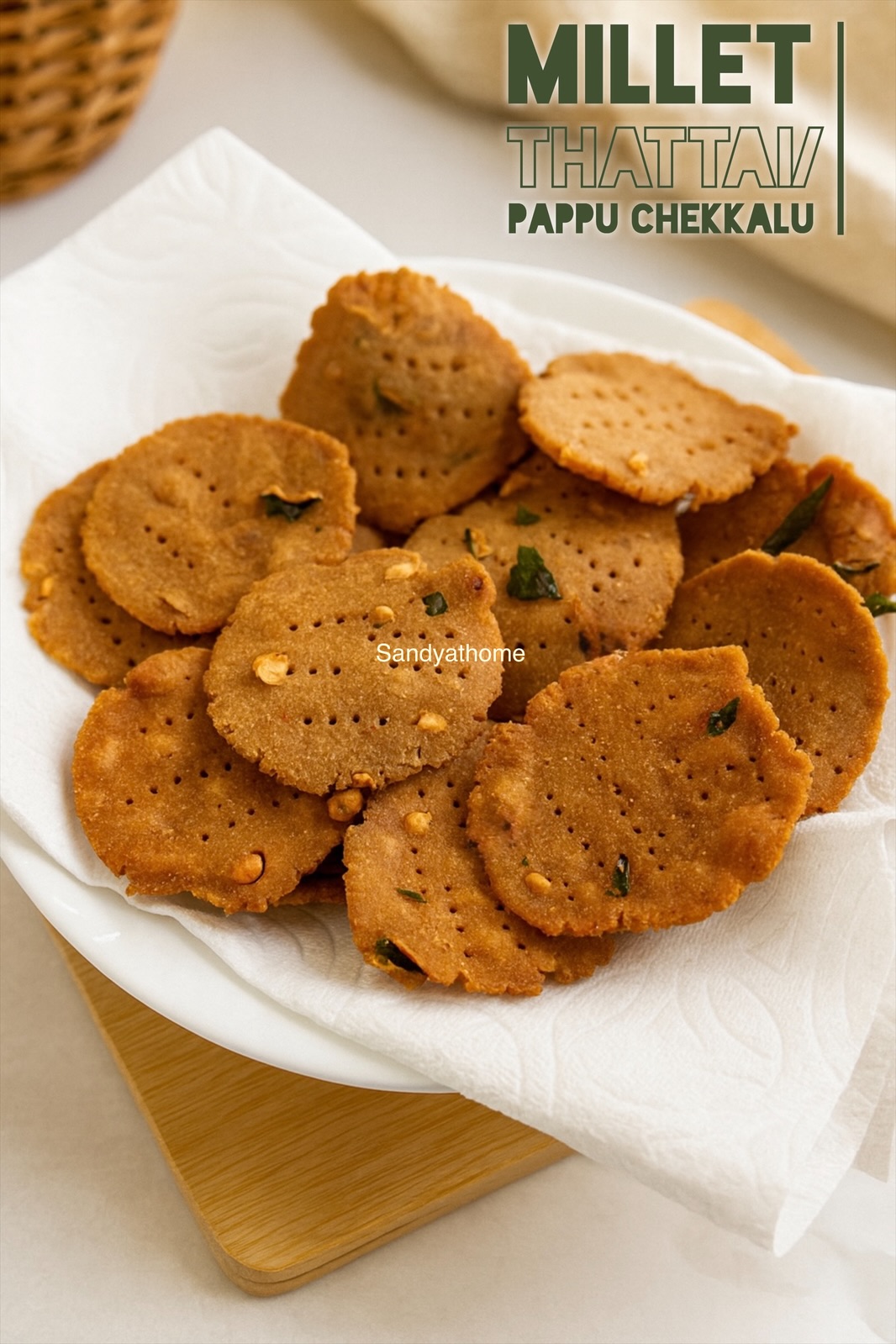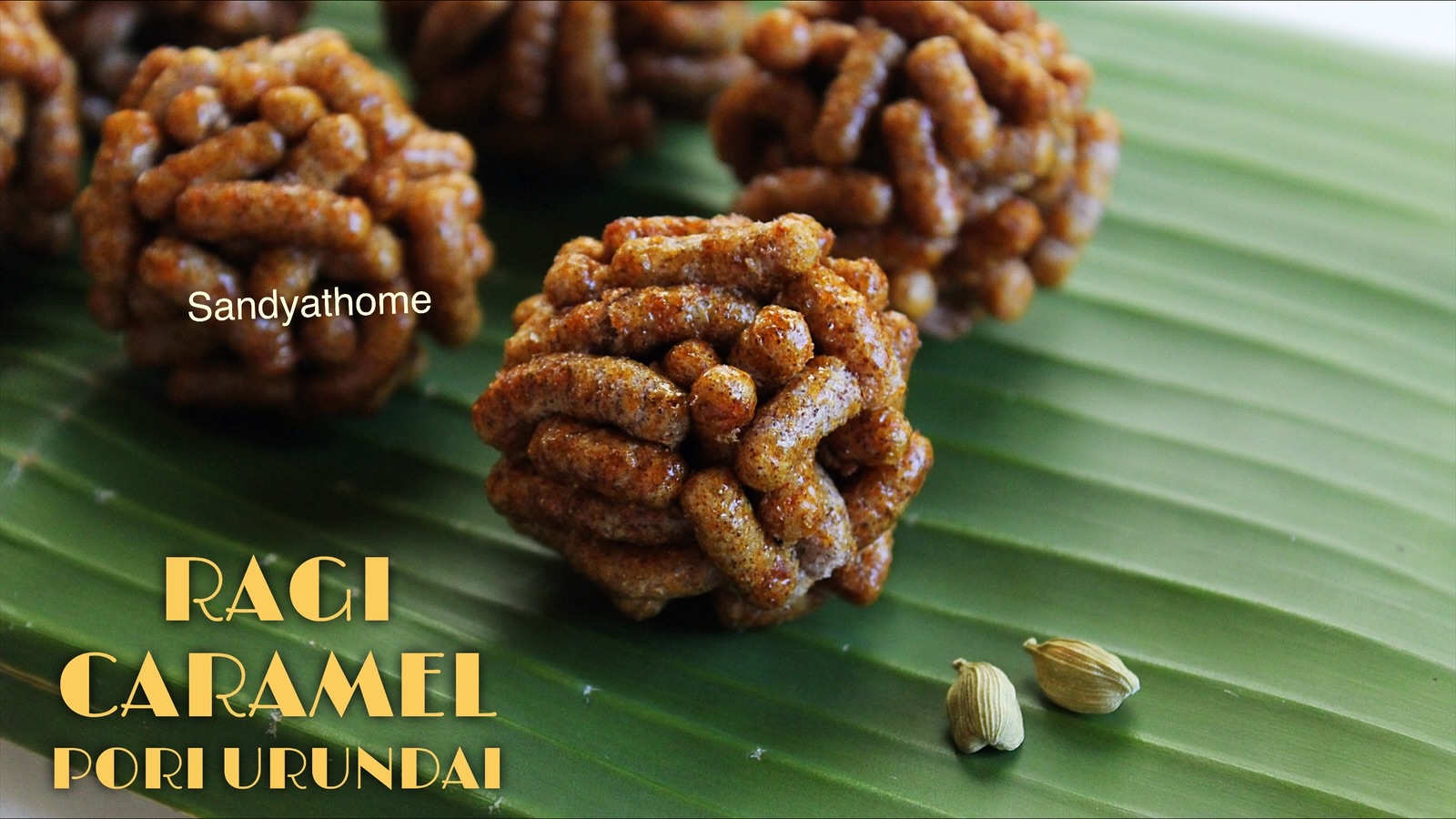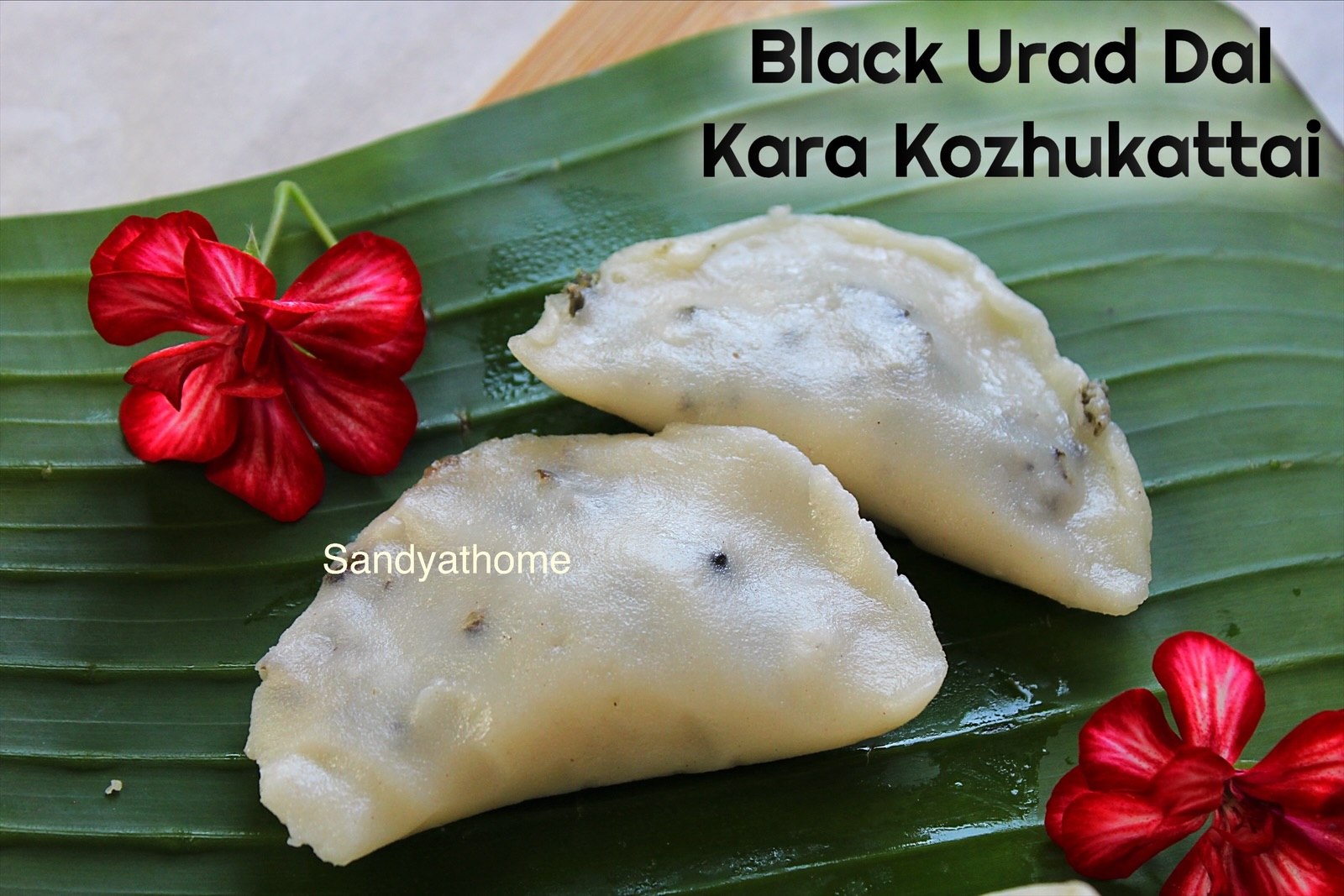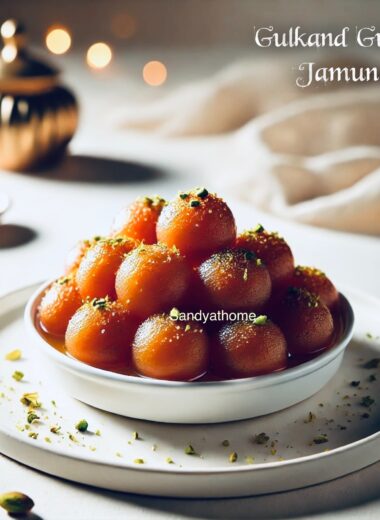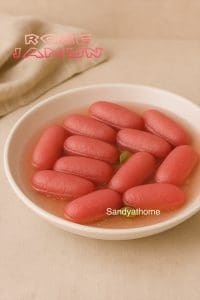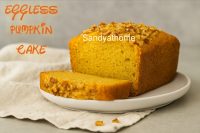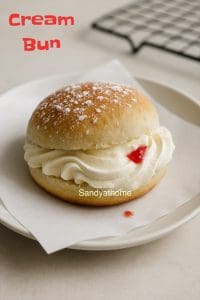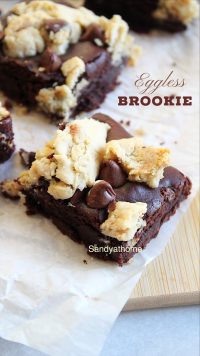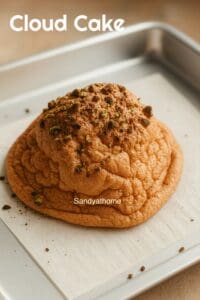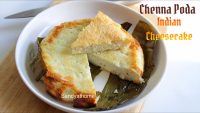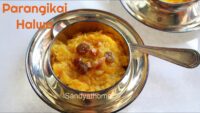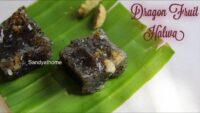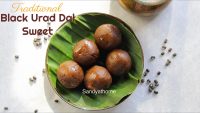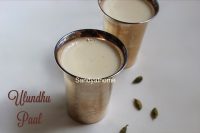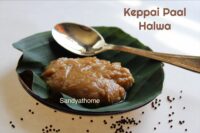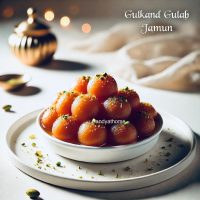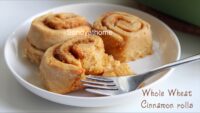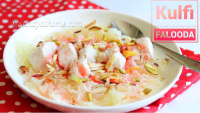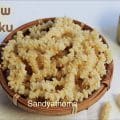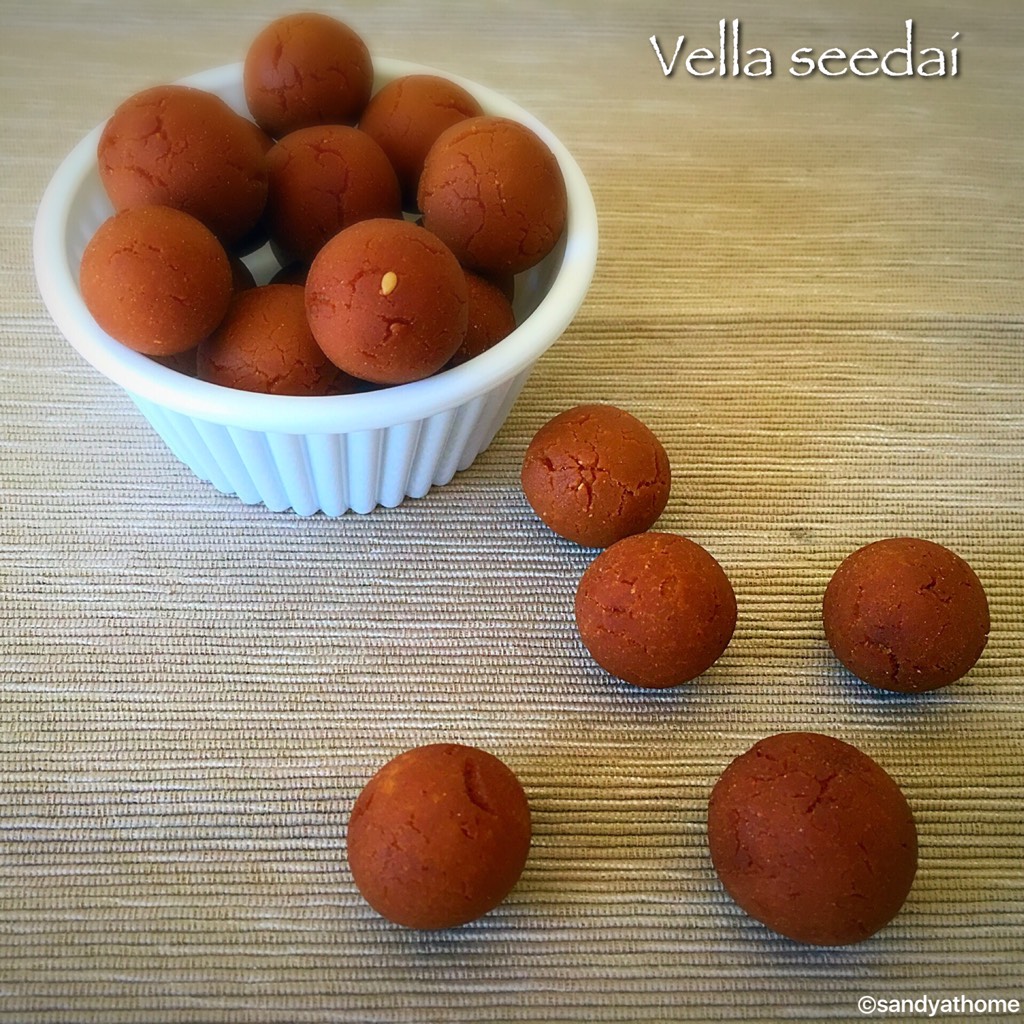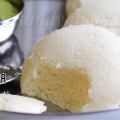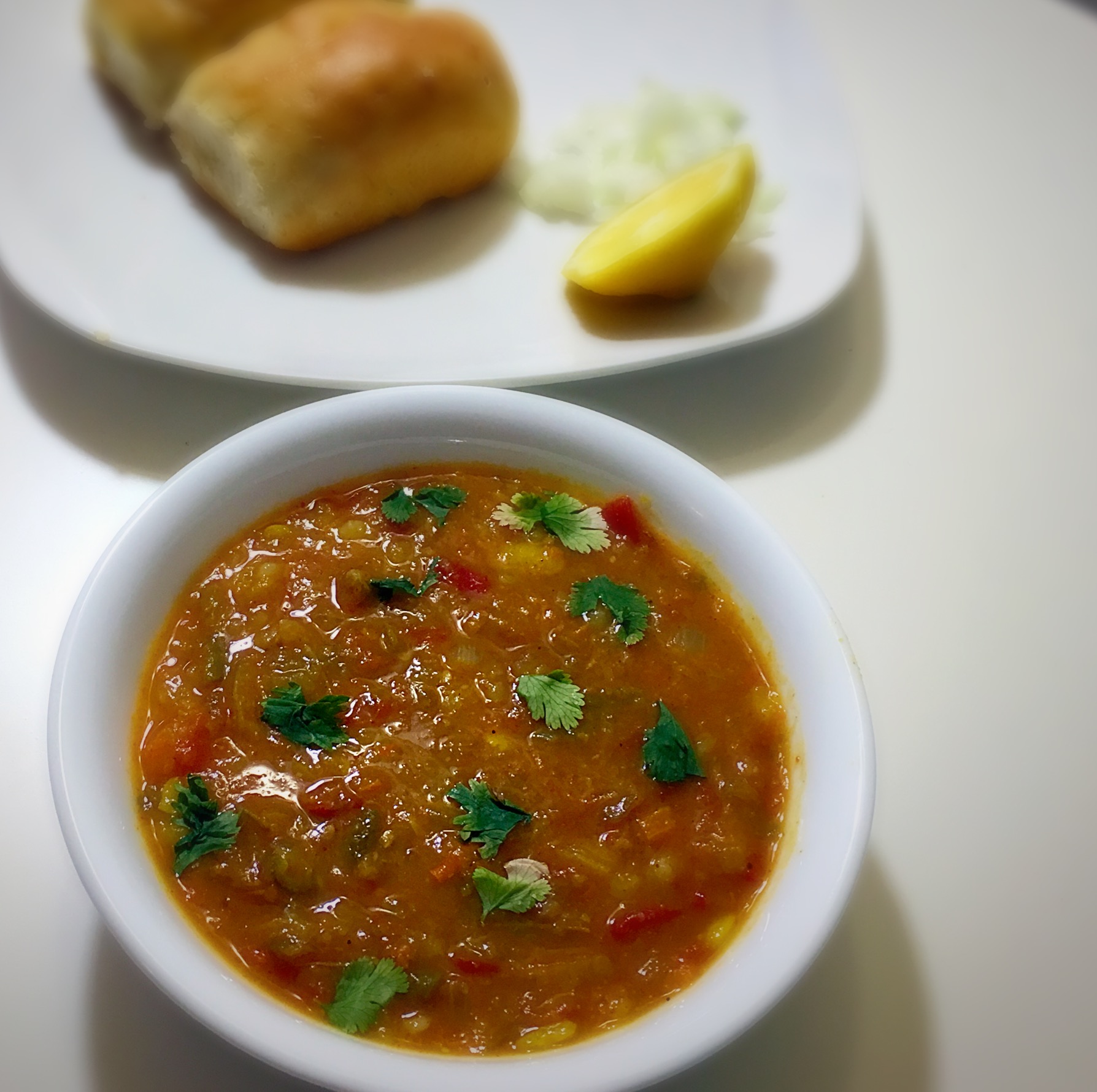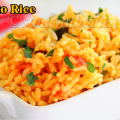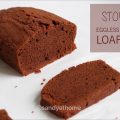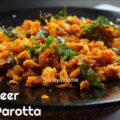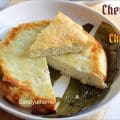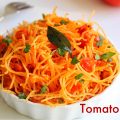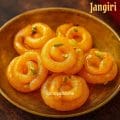Soft, melt-in-the-mouth Carrot Mysore Pak made with fresh carrot puree, roasted besan, sugar, and ghee. Deepavali always fills my kitchen with the golden aroma of ghee and sweets bubbling on the stove. This year, I decided to give the classic Mysore Pak a gentle twist — a touch of carrot! 🥕 I love carrots for their subtle sweetness and color, and I love soft, ghee-laden Mysore Pak that melts the moment you bite in. So I blended the two together and created this festive version that’s rich, fragrant, and bright like the season itself. Each piece carries that nostalgic taste of Mysore Pak but with the freshness of carrots, making it a little modern and a lot homemade.
Wishing everyone a very Happy Deepavali filled with warmth, light, and the comforting aroma of ghee sweets from your own kitchen.
A Bite of History – Ghee Carrot Mysore Pak
Mysore Pak traces its royal roots back to the kitchens of the Mysore Palace, where it was first created during the reign of King Krishna Raja Wadiyar IV. The story goes that the royal chef, Kakasura Madappa, accidentally invented it while experimenting with ghee, sugar, and gram flour — and the result was so divine that it was instantly declared a palace favorite. Over time, this humble trio of ingredients became a symbol of South Indian festivals and celebrations.
My version — Carrot Mysore Pak — is a gentle nod to that royal heritage, with a modern festive touch. The addition of carrot not only lends a natural hue but also softens the texture, giving it that perfect melt-in-the-mouth feel that we all crave during Deepavali.
Jump to RecipeIngredient Roles in Ghee Carrot Mysore Pak
| Ingredient | Role in Recipe |
|---|---|
| Gram flour (besan) | Forms the base of the Mysore Pak and gives that nutty flavor when roasted in ghee. |
| Carrot puree | Adds natural sweetness, color, and a soft, moist texture. |
| Sugar | Sweetens and creates the syrup that binds all ingredients together. |
| Ghee | The soul of Mysore Pak — gives it that melt-in-mouth texture and rich aroma. |
| Water | Helps dissolve sugar and achieve the perfect one-string consistency. |
| Milk (optional) | Enhances color and softness in the final texture. |
| Cardamom powder | Adds a gentle fragrance and traditional flavor. |
| Roasted cashews (optional) | Used for garnish and a light crunch in contrast to the soft pak. |
You May Also Like these Recipes:
- Instant mysore pak recipe, Microwave mysore pak,
- Mysore pak recipe, Soft Mysore Pak recipe (with video)
- Mysore chutney recipe, Spicy red chutney, Chana dal chutney
- Mysore bonda, Ulundu bonda, Urad dal bonda recipe, How to make mysore bonda
- Kodo Millet Arisi Upma – Ancient Tamil Recipe with Rustic Flavors
Directions to make carrot myspre pak with step by step images
- Prepare carrot puree
Wash, peel, and slice carrots.
Add to a blender with a little water and grind into a smooth puree.
Set aside.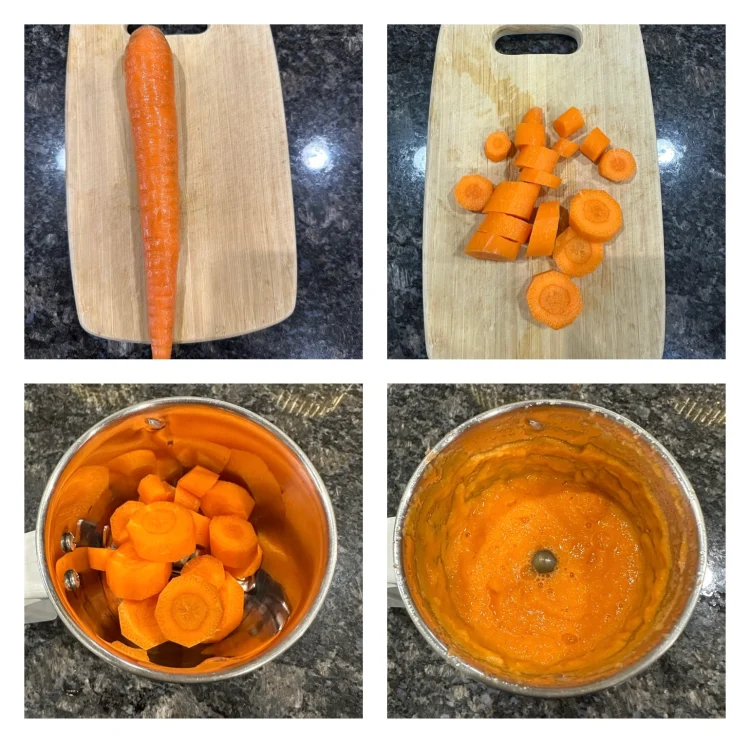
- Roast the besan
Heat 2 tbsp ghee in a pan. Add gram flour (besan) and roast on low flame until it turns aromatic and slightly golden.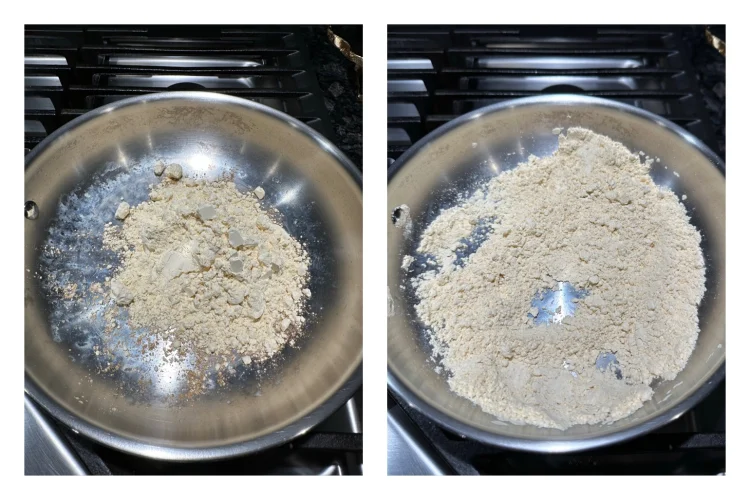
- Prep the Besan
Sieve roasted besan once to remove lumps.
Mix the roasted flour with a few spoons of melted ghee to make a smooth paste. Keep aside.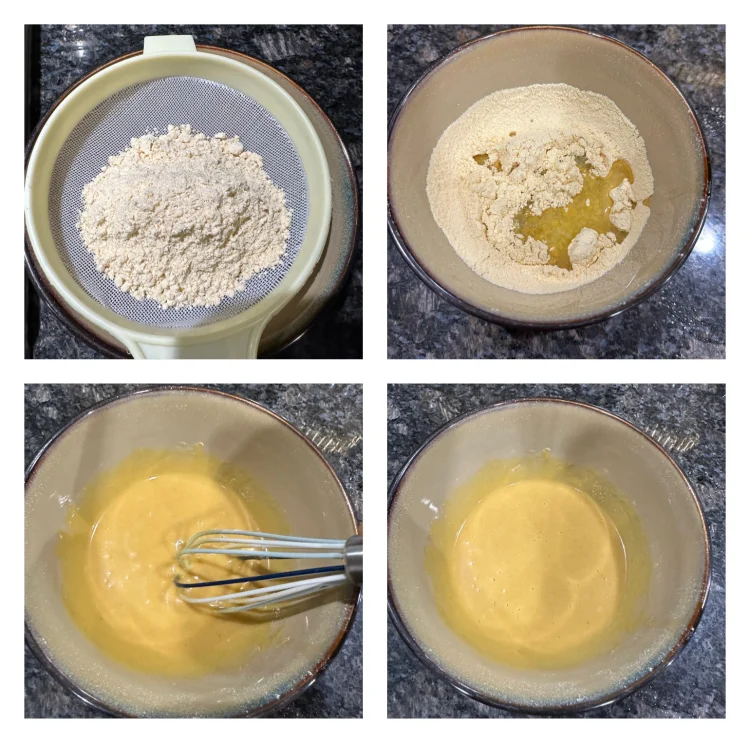
- Make sugar syrup with carrot puree
In a heavy-bottomed pan, add sugar and water. Once the sugar dissolves, add the carrot puree.
Stir continuously and cook on medium flame until the syrup turns glossy.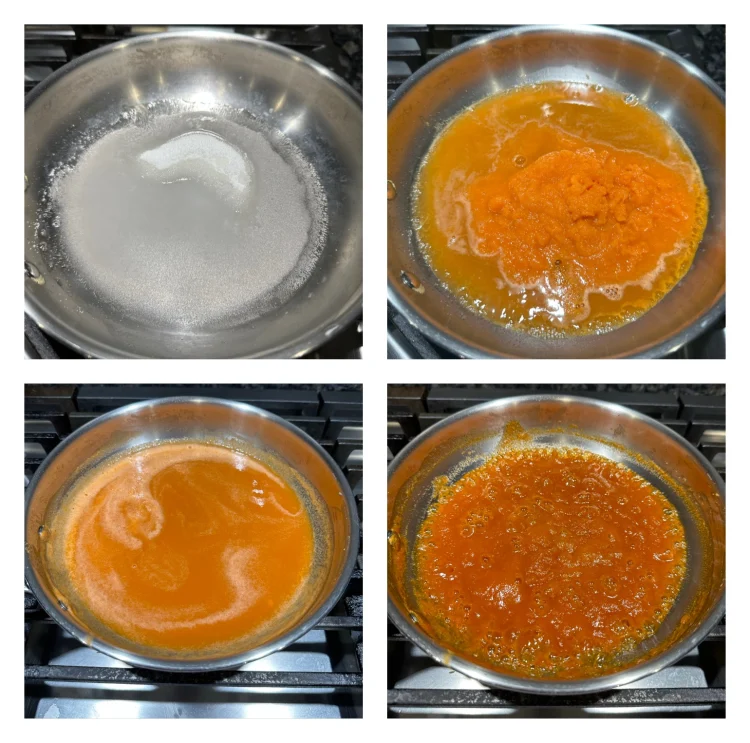
- 1 string consistency
Stir continuously and cook on medium flame until the syrup turns glossy.
Check for one-string consistency by touching a drop between your fingers — it should form a thin, unbroken thread.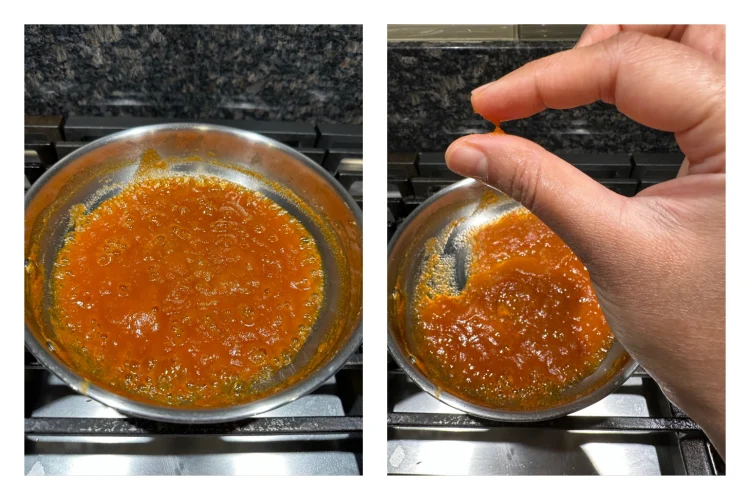
- Add the besan mixture
Reduce flame to low and add the roasted besan-ghee mixture gradually to the syrup, stirring continuously to avoid lumps. Mix until smooth.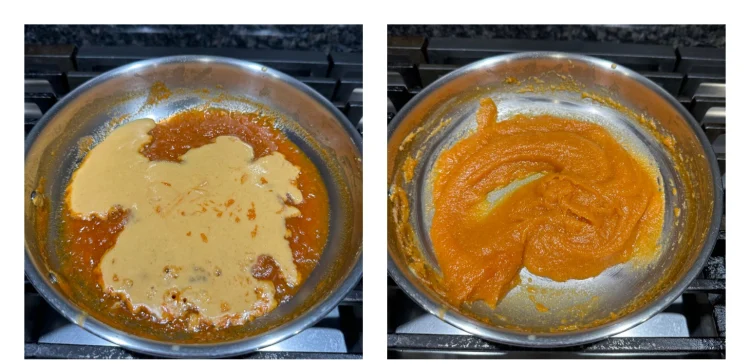
- Add remaining ghee
Slowly pour the remaining melted ghee, a spoon at a time.
Keep stirring until the mixture thickens and leaves the sides of the pan.
You’ll notice the ghee starts to separate slightly and the mixture turns silky.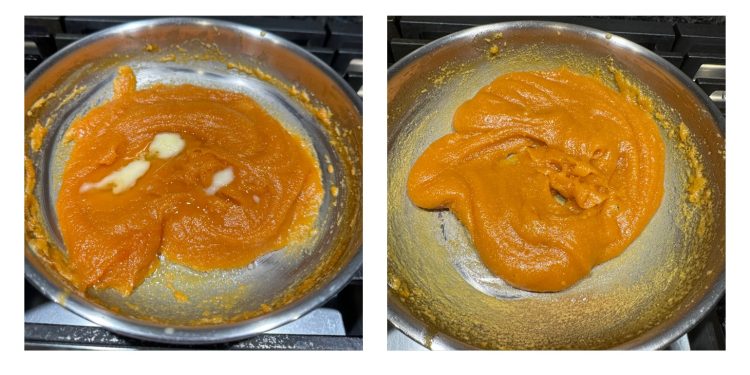
- Set the Mysore Pak
Grease a tray with 2 teaspoon ghee. Immediately pour the mixture into the tray and flatten the top with a spatula.
Let it rest for 10–15 minutes. Cut into squares or rectangles while still warm.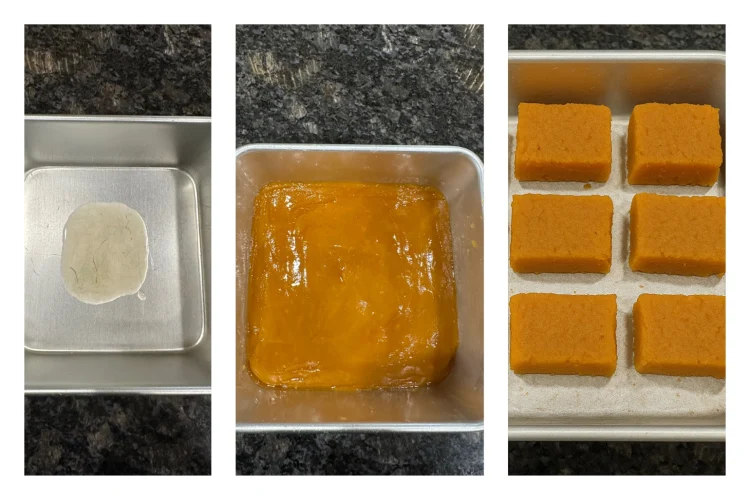
Pro Tips to make perfect Ghee Carrot Mysore Pak
- Roast the besan patiently: Always roast on low flame until the raw smell disappears and a nutty aroma rises — this makes all the difference in flavor.
- Smooth carrot puree: Blend carrots finely and strain if needed; a silky puree gives a smooth-textured Mysore Pak.
- Ghee matters: Use fresh, aromatic ghee for the best flavor and that golden, glossy finish.
- Timing is key: Once the mixture leaves the sides of the pan and small ghee bubbles appear, pour immediately — overcooking makes it hard.
- Sugar syrup test: Always check for one-string consistency — this ensures the Mysore Pak stays soft, not crumbly.
- Add ghee gradually: Pour in little by little; this allows the mixture to absorb and form that silky, melt-in-mouth structure.
Serving Suggestion
Serve warm or at room temperature.
Store in an airtight container at room temperature for 3–4 days — it tastes even richer the next day as the ghee settles.
FAQs – Ghee Carrot Mysore Pak
→ If your Carrot Mysore Pak turned hard, it means the sugar syrup was overcooked. Try reducing the cooking time slightly or adding a tablespoon of ghee at the end before setting.
→ Yes! This carrot Mysore Pak without milk turns out just as delicious. Milk simply adds color depth and a slightly richer texture.
→ Traditional Mysore Pak never uses khoya — the richness comes from pure ghee and roasted besan. The carrot puree naturally adds softness and a halwa-like richness.
→ Yes, you can make a carrot Mysore Pak with jaggery, but the color will turn deeper and taste more earthy — closer to traditional Mysore paagu pakam style.
→ Use enough ghee and store it in an airtight box once cooled. Avoid refrigerating — cold air hardens the texture.
→ For authentic texture, stovetop is best. The controlled ghee roasting gives that signature soft ghee Mysore Pak mouthfeel that microwaves can’t replicate.
Sweets & Desserts
Rose Jamun, How to make Paneer Rose Jamun
Paneer Rose Jamun is a delightful twist on the classic rasgulla — made fresh from curdled milk (chenna) and flavored with fragrant rose syrup. Each piece is soft, juicy, and blush-pink in color, soaked in a sweet rose-cardamom syrup that fills your kitchen with a festive aroma. Perfect for Diwali, Holi, or any celebration where you want homemade mithai magic!
Eggless Pumpkin Cake, How to make Pumpkin Cake
Soft, moist, and warmly spiced, this Eggless Pumpkin Cake melts in your mouth with a tender crumb and a cozy hint of cinnamon and nutmeg.
Indian Bakery-Style Cream Buns, How to make Bakery- Style Buns
Soft and fluffy eggless cream buns filled with nostalgic Indian bakery-style buttercream, dusted with sugar and topped with a cherry for a classic touch.
Eggless Brookie, How to make Eggless Brookie
Eggless brookies combine the best of both worlds — a chewy cookie top with a fudgy brownie base. With a shiny crinkle crust and gooey center, these bars are the perfect indulgence for chocolate lovers.
Viral Cloud Cake, How to make Vanilla Cloud Cake
A light, fluffy cloud cake made with just egg whites, sugar, and a hint of vanilla, finished with a pistachio crunch — a flourless viral dessert that melts in your mouth.
Chenna Poda, How to make Indian Cheesecake
This banana leaf–baked Chenna Poda is a soulful take on Odisha’s traditional burnt cheesecake. Made with fresh chenna, sugar, and cardamom, it’s slow-baked to get those golden caramelised edges and soft center — no tins, just pure nostalgia wrapped in leaf.
Parangikai Halwa with Coconut Milk, How to make Pumpkin Halwa
A soft, golden halwa made with yellow pumpkin, thick coconut milk, and organic cane sugar — this revival-style sweet is inspired by Tamil fasting traditions and temple offerings, perfect for vratham days, prasadam, or a comforting vegan dessert.
Dragon Fruit Halwa, How to make Fruit Halwa
A tropical Indian halwa made with cornflour, dragon fruit, ghee, and organic cane sugar — crafted in the Sandyathome revival kitchen by Sandhya Riyaz.
How to make Ulundhu Kali, Karuppu Ulundhu Sweet
A traditional, melt-in-mouth Tamil sweet made with black urad dal, palm jaggery, and gingelly oil — ulundhu kali is rooted in puberty rituals, postpartum healing, and quiet ancestral wisdom.
How to make Ulundhu Paal, Tirunelveli-Style White Urad Dal Payasam
Ulundhu Paal is a traditional Tirunelveli-style sweet payasam made with white urad dal, coconut milk, and jaggery. This ancient Tamil recipe is a nourishing revival from the past—rich in iron, comforting, and deeply soulful.
How to make Ancient Ragi Milk Halwa, Keppai Paal Halwa
A soft, ghee-rich ragi halwa once made in Tamil Muslim homes after Bakrid — this revival sweet is slow-cooked from freshly extracted millet milk and meant to be savored, not sliced.
Gulkand Gulab Jamun Recipe – How to Make a Perfect Indian Dessert at Home
When it comes to Indian sweets, Gulab Jamun is a dessert that holds a special place in every festive celebration. But what if we add a unique twist to this…
Cinnamon rolls, How to make cinnamon rolls
Cinnamon rolls are soft, fluffy and delicious cinnamon flavored sweet warm roll. It is prepared with flour, yeast, egg, butter, brown sugar and as the name goes it screams cinnamon flavor….
Eggless cinnamon rolls, How to make whole wheat cinnamon rolls
Whole wheat eggless cinnamon roll is sweet, soft, fluffy and delicious warm roll. It is prepared with whole wheat flour, yeast, butter, brown sugar and as the name goes it…
Kulfi falooda recipe, How to make Kulfi falooda
Kulfi Falooda is an eye-catching and delicious summer dessert that brings together creamy kulfi, silky falooda sev, and fragrant rose syrup in one chilled plate. Topped with crunchy nuts and optionally sabja seeds, this mess-free fusion treat is as fun to make as it is to eat!
